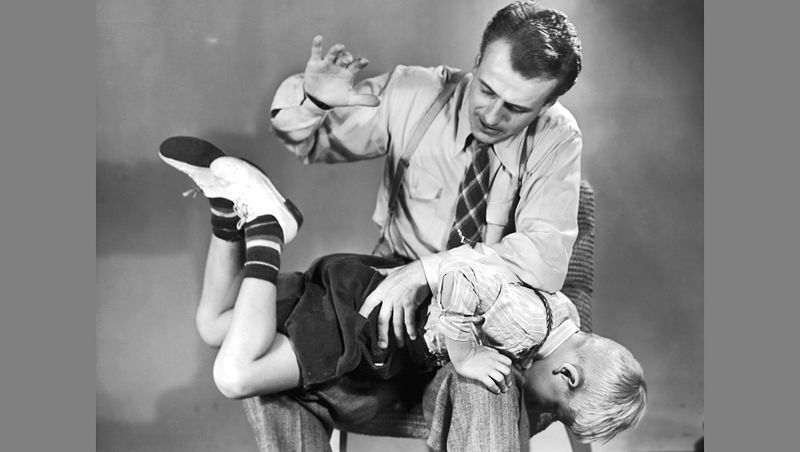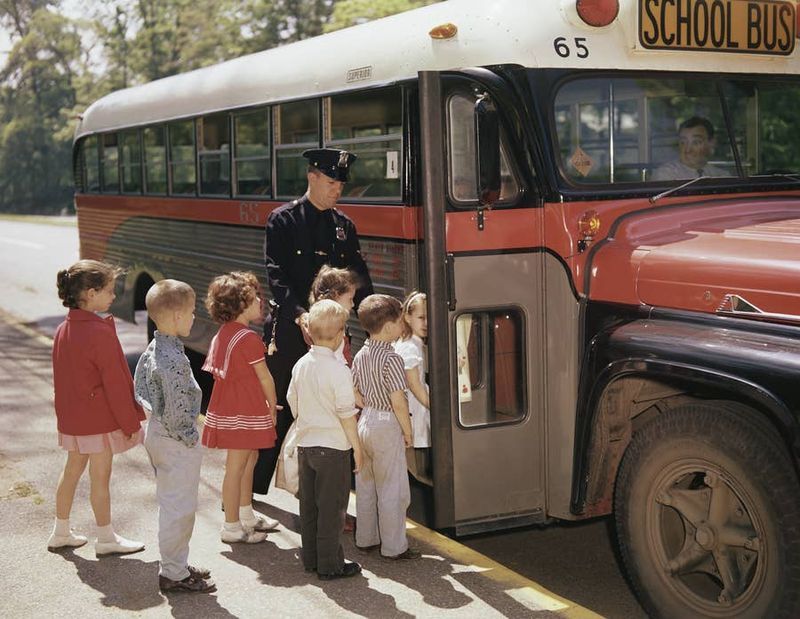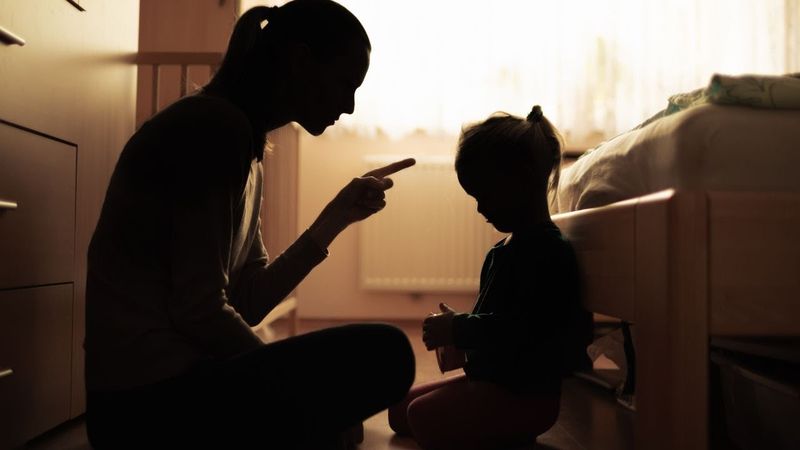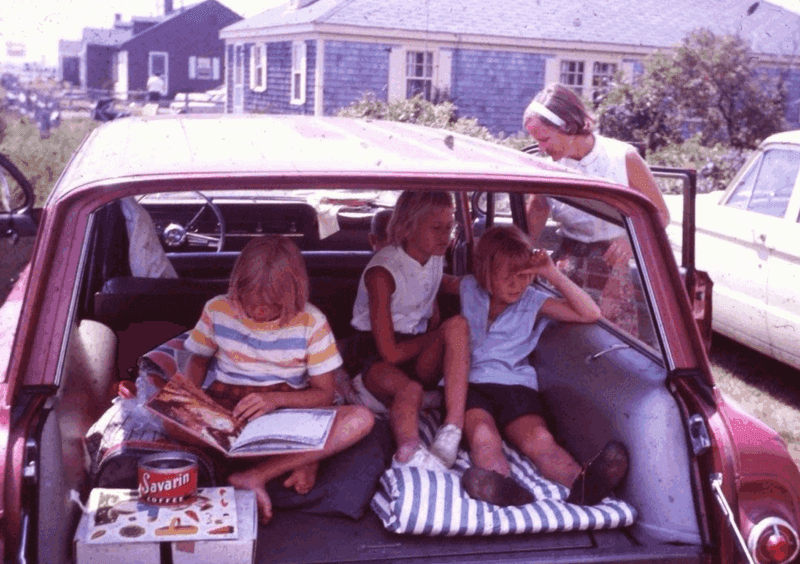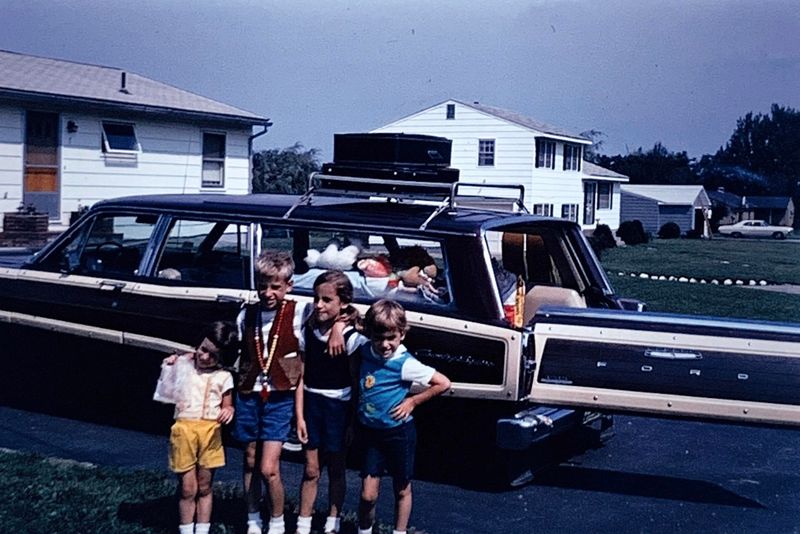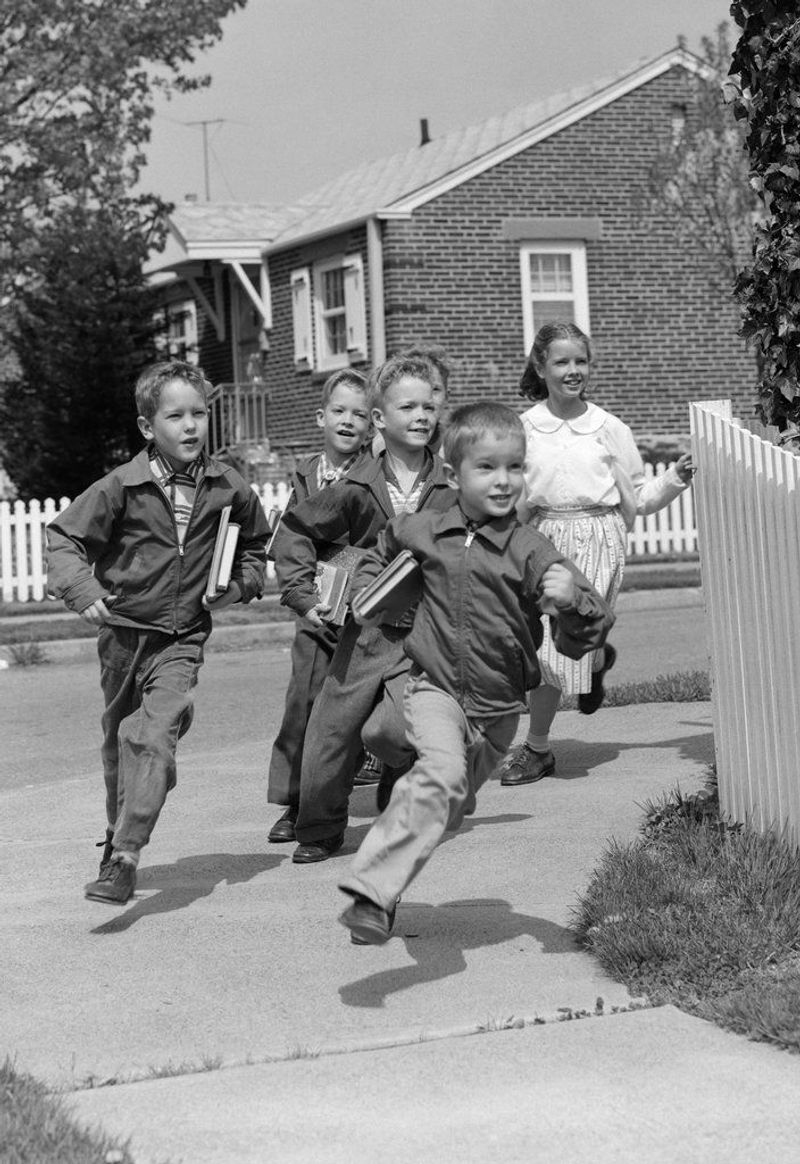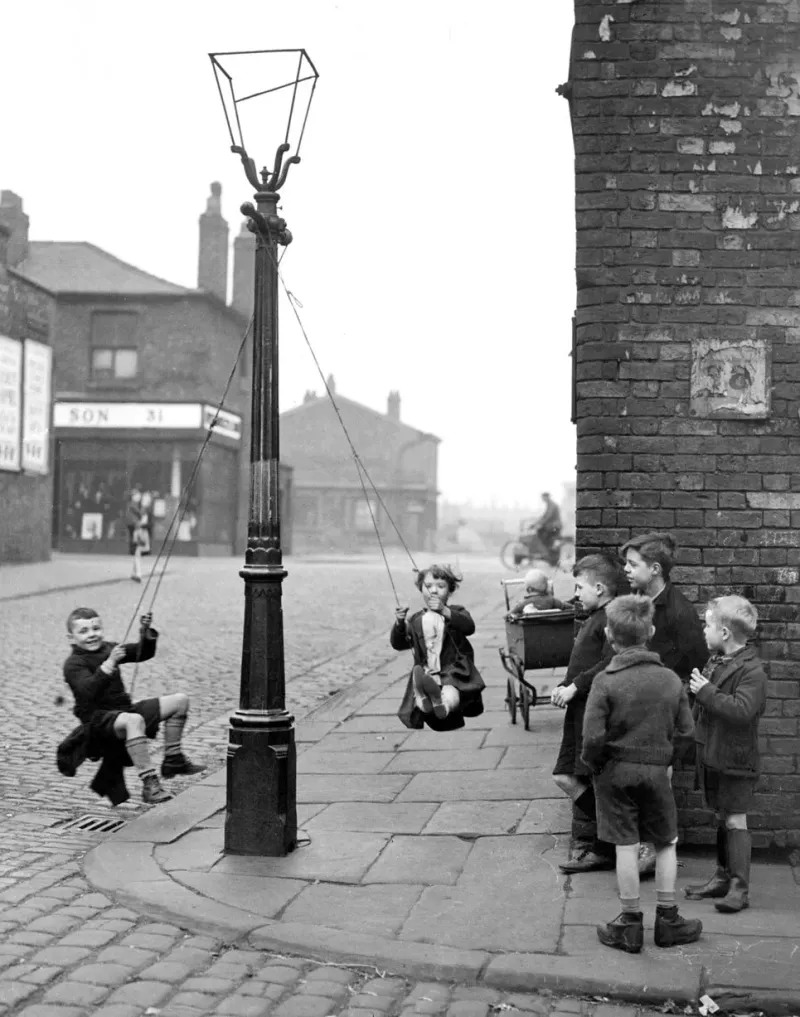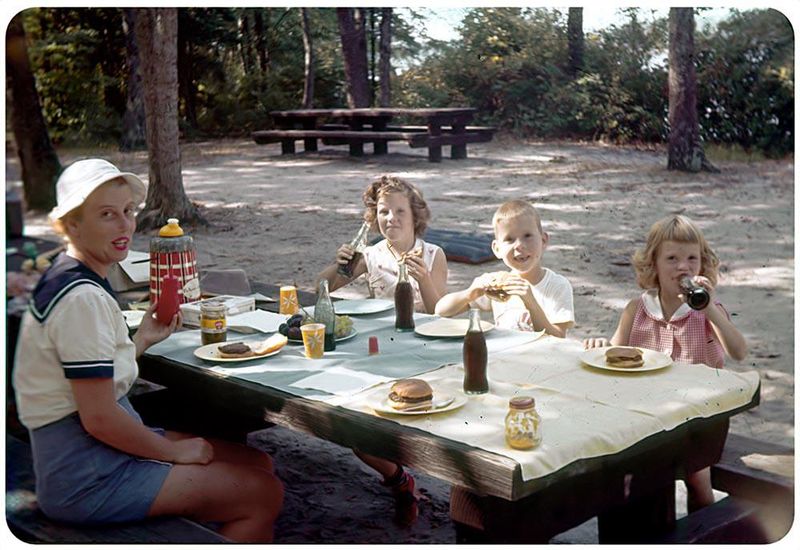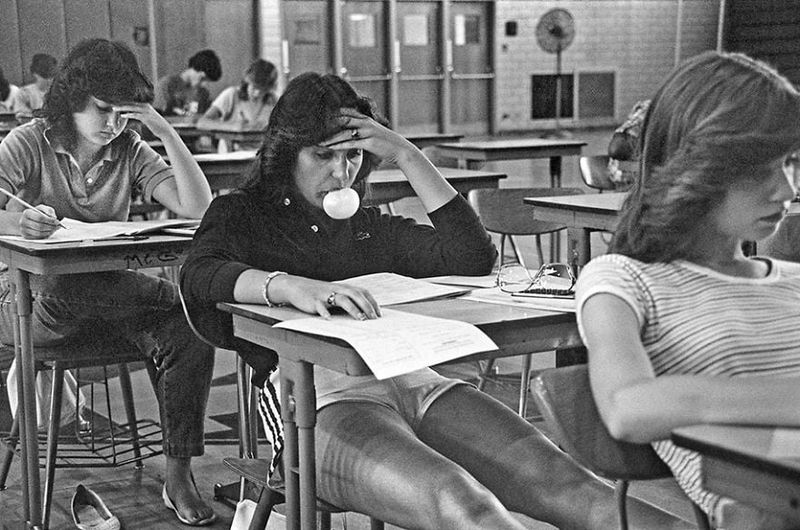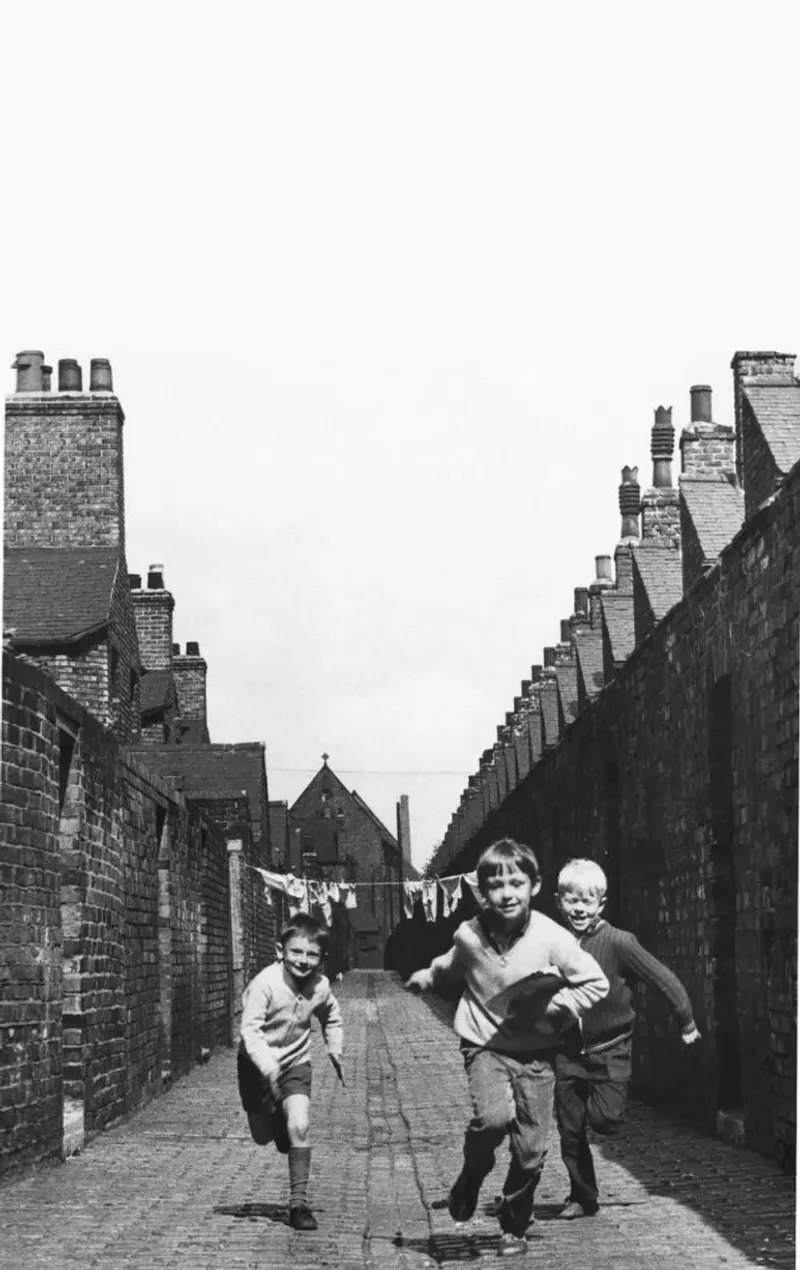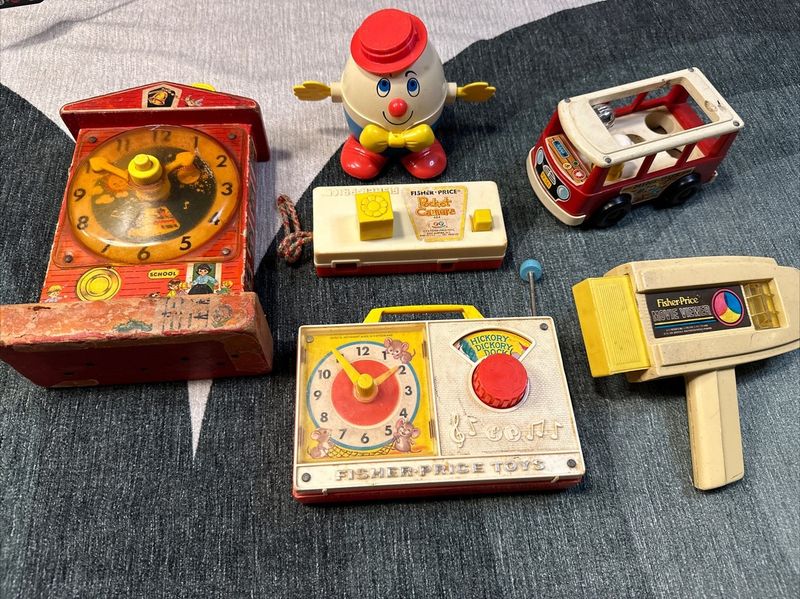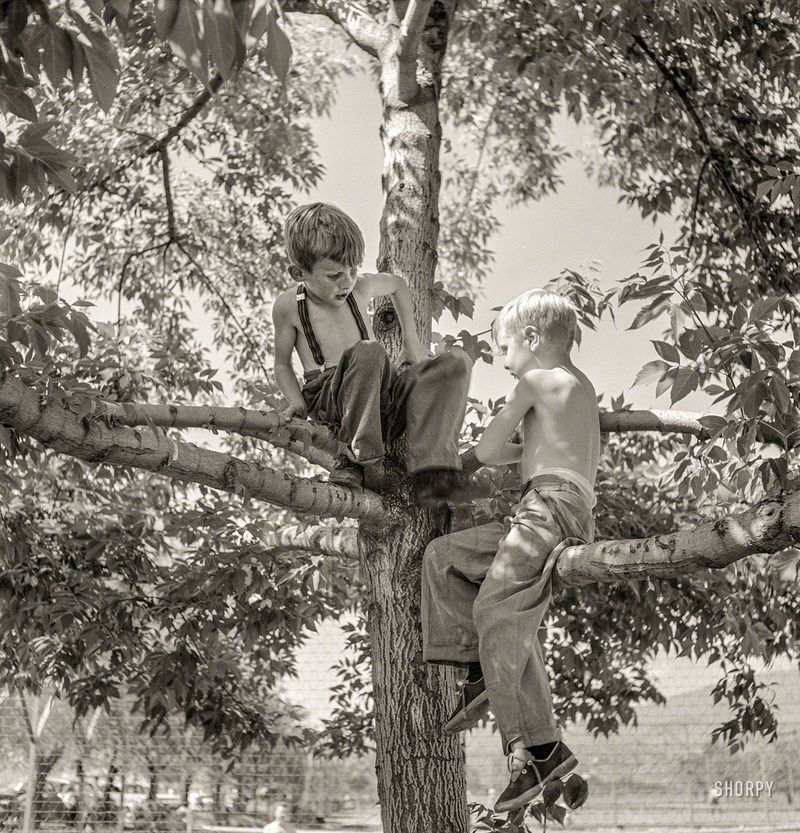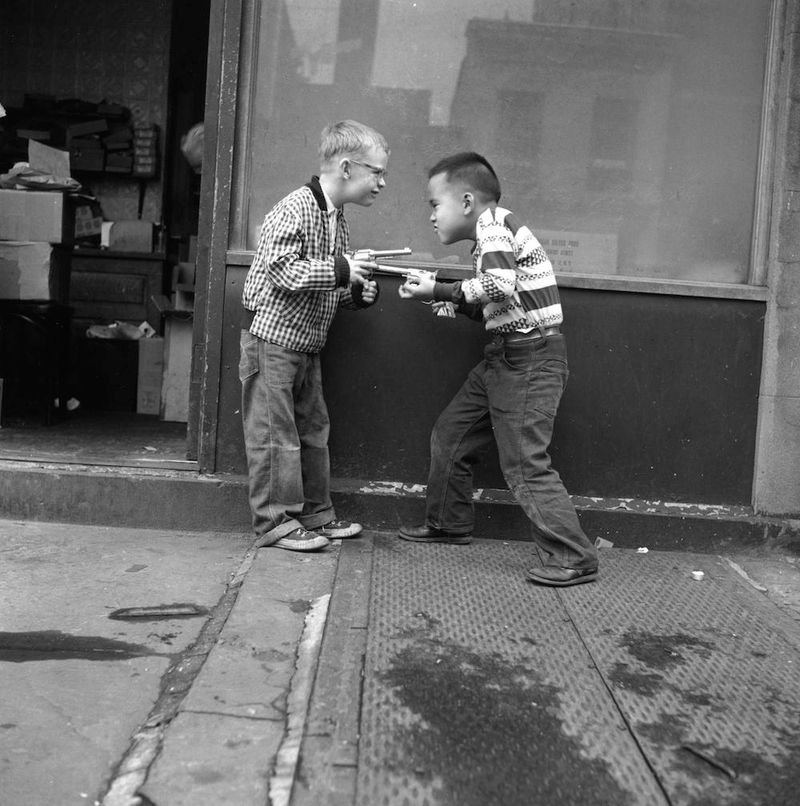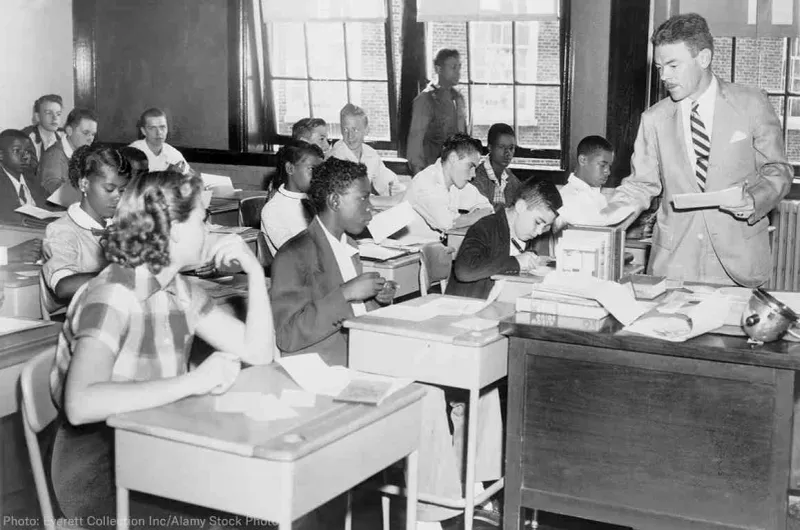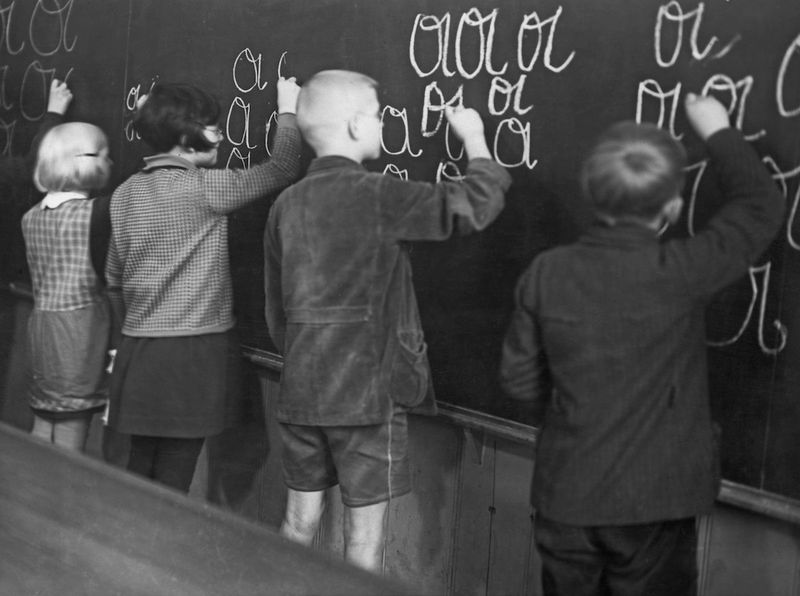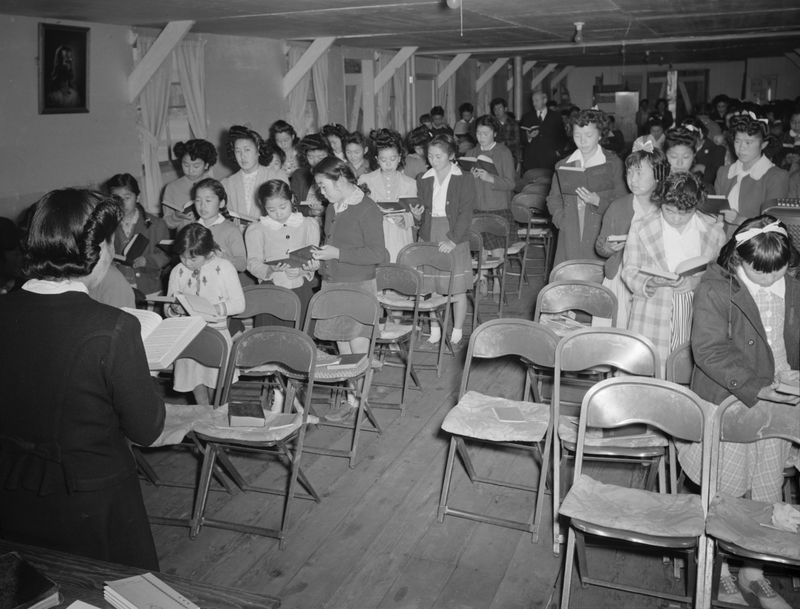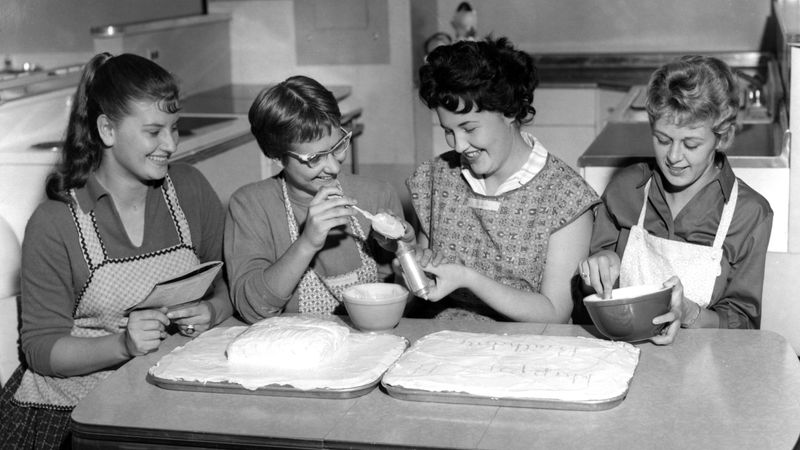Reflecting on the past, it’s fascinating to realize how much childhood rules and expectations have evolved over the decades. Fifty years ago, children’s lives were governed by a set of strict rules that might seem shocking today. From household dynamics to social etiquette, kids were expected to adhere to a wide range of guidelines that dictated their behavior, both at home and in public. This article explores 30 of these restrictions, offering a glimpse into a world where discipline was paramount, and freedom was not as abundant as it is today.
1. Talk back to adults – Instant punishment (often physical).
Once upon a time, children’s voices were but whispers in the presence of adults. Talking back was met with immediate repercussions, often in the form of corporal punishment. In households where respect was the cornerstone, any retort could earn a stern look or a swift reprimand. Discipline was swift, ensuring the lesson was both memorable and respected. Even the slightest hint of defiance could result in a grounding or a lecture. Children quickly learned to measure their words carefully, knowing that every adult conversation was a minefield of potential missteps.
2. Leave the dinner table without permission – Kids had to ask, “May I be excused?”
Dinner wasn’t just a meal; it was an event. Families gathered around the table, and children were expected to remain seated until granted permission to leave. “May I be excused?” was more than just a question; it was a ritual that underscored respect and patience. Leaving prematurely without acknowledging the host or hostess was considered rude. This tradition taught children the value of patience and respect for communal family moments. In this setting, every meal was a lesson in manners and decorum, ensuring children understood the importance of family unity.
3. Call adults by their first names – It was always “Mr.” or “Mrs.”
In times gone by, first names were a privilege, not a right. Children referred to adults by titles, such as “Mr.” or “Mrs.”, unless explicitly invited to do otherwise. This practice instilled a sense of respect and acknowledgment of authority. To call an adult by their first name was seen as a breach of etiquette, a step too familiar. This distinction created a respectful distance between generations, ensuring boundaries were respected. Even today, some families uphold this tradition, a nod to a bygone era where manners reigned supreme.
4. Wear hats indoors – Especially at the table (seen as disrespectful).
Hats off! Indoors, that is. Wearing hats inside, particularly at the table, was seen as a sign of disrespect. This seemingly simple act was steeped in tradition. Removing one’s hat upon entering a home or sitting for a meal was more than etiquette; it was a symbol of respect and humility. The simple gesture served as a reminder of the importance of tradition and the unspoken rules that governed polite society. Today, while the rules may have relaxed, the echoes of such customs can still be felt in certain settings.
5. Interrupt adult conversations – “Children should be seen, not heard.”
“Seen and not heard,” a mantra that echoed through the halls of yesteryear. Interrupting an adult conversation was a cardinal sin for children. Patience and silence were virtues, instilled from a young age. In adult gatherings, children were often relegated to the background, absorbing the world through observation. This expectation taught them the art of listening and the value of measured speech. Although voices were stilled, eyes remained wide open, taking in the dynamics of adult interaction. This rule reinforced respect and the subtle boundaries of social engagement.
6. Touch the thermostat – Only Dad controlled the heat!
Thermostats were sacred ground, a domain strictly controlled by the patriarch. Adjusting the temperature was reserved for the man of the house, a responsibility not to be taken lightly. Children dared not touch it, as it symbolized both authority and the careful balance of household harmony. This rule was often accompanied by stern warnings about energy costs. The thermostat represented the silent power dynamics within the family, a reminder of the boundaries set by authority. Years later, the struggle over control continues, albeit with more democratic discussions.
7. Use the phone without permission – Families often had one shared landline.
When telephones were tethered to the wall, their use was a privilege, not a right. Children needed permission to use the family phone, a shared line that connected them to the world outside. Often, the phone call had to be brief, as others might need to use the line. This rule taught children the importance of sharing resources and respecting family needs. In an era before mobile phones, the landline was a communal tool, a shared thread that kept families connected to the world, bound by rules of courtesy and consideration.
8. Watch TV during the day – Only allowed after homework and chores.
Daytime television was a rare treat, often reserved for weekends or special occasions. Homework and chores took precedence, teaching children responsibility and the value of contribution before leisure. The TV remained off until evening, waiting silently for its audience. This rule instilled discipline, encouraging children to fulfill their obligations before indulging in entertainment. In a world with fewer distractions, chores were seen not as a burden but as a part of daily life. The reward of evening television provided a sense of accomplishment and well-earned relaxation.
9. Open the fridge too much – “You’re letting the cold air out!”
Refrigerators held a mystique, a magical vault of cold air and perishables. Opening the fridge too often was frowned upon, with stern warnings about wasting energy. “You’re letting the cold air out!” chimed the familiar refrain, teaching children the value of conservation and awareness. This rule reinforced the importance of moderation and resourcefulness. Children learned to plan their culinary raids wisely, avoiding unnecessary openings. The fridge, a household staple, became a symbol of responsibility and an early lesson in environmental consciousness, long before it became mainstream.
10. Go into the “good living room” – Many homes had a no-kids-allowed formal parlor.
The “good living room” was a sanctuary, a pristine display of the family’s finest. Entering it was not for the faint-hearted child. Reserved for guests and special occasions, this room was off-limits for everyday play. The allure of untouched furniture and delicate ornaments taught children respect for boundaries and the value of preserving beauty. This rule underscored the importance of reverence for special spaces, transforming the parlor into a forbidden kingdom of elegance. Though it might seem strange today, it was once a testament to the formality of domestic life.
11. Ride in the front seat – Kids were always in the back (no seatbelts required).
Front-seat fantasies were often dashed, as the coveted spot was reserved for adults. Children were relegated to the back, a tradition rooted in safety and hierarchy. Ironically, seatbelts were seldom used, yet the separation was enforced. This practice taught children patience and an understanding of family dynamics. The back seat was a domain of observation, where stories were shared and memories forged. Today, with safety regulations in place, the irony remains that while seatbelts became mandatory, the back seat still holds its quiet charm and lessons.
12. Complain on road trips – “Don’t make me pull this car over!”
Long car rides demanded patience, and complaints were met with the quintessential threat: “Don’t make me pull this car over!” Road trips were a test of endurance, where children learned the art of compromise and the joy of scenery. The journey was as much about family bonding as it was destination. Endless games of “I Spy” and sing-alongs filled the air, forging connections that outlasted the dusty miles. Complaining, however, was a forbidden fruit, teaching kids resilience and the unspoken rule of unity in confined spaces.
13. Play outside the neighborhood – Many kids had strict boundaries (e.g., “Don’t cross Main Street”).
Adventure beckoned beyond the street, yet boundaries were firmly set. “Don’t cross Main Street,” echoed as a rule etched in the minds of young explorers. These invisible borders taught children about safety and respect for parental guidance. The thrill of exploration remained within marked lines, fostering creativity and resourcefulness. Neighborhoods became kingdoms of imagination, each street a pathway to new adventures. Boundaries were not just physical but lessons in trust and responsibility, guiding children in navigating the world with cautious curiosity and a touch of independence.
14. Stay out past dark – Streetlights = curfew.
Streetlights were the ticking clock, the silent signal for children to return home. Playing outside after dark was a forbidden thrill, saved for the brave or the forgetful. This rule taught children the rhythm of time and the importance of safety. The glow of the streetlights was a gentle reminder, a beacon guiding them back to the warmth of home. As shadows lengthened, the familiar call of parents echoed through the streets, marking the end of day’s adventures. The streetlight curfew was a lesson in discipline and responsibility.
15. Hitchhike (in some places) – Surprisingly, some teens did this in rural areas!
In rural settings, hitchhiking was a rite of passage for some adventurous teens. Though frowned upon, it was a means of exploration and independence. The open road beckoned, yet the rule was clear: it was risky business. Parents warned of dangers, yet the thrill of the unknown often called louder. For those who dared, it was a lesson in trust and resilience, a journey into the unpredictable. While modern sensibilities have shifted, the spirit of hitchhiking remains a symbol of youthful wandering and the desire to explore beyond known horizons.
16. Eat candy before dinner – Sweets were rare treats.
Candy was a treasure, a sweet indulgence saved for after meals. Eating it before dinner was a sacrilege, a disruption of the culinary order. This rule taught patience and the value of anticipation. Sweets were not just treats but lessons in moderation and self-control. Mealtime was sacred, and candy was the reward, a symbol of the balance between pleasure and nourishment. The promise of dessert taught children to appreciate the simple joys of life, reinforcing the art of waiting and enjoying the moment when it finally arrived.
17. Drink soda whenever they wanted – Usually reserved for special occasions.
Soda, a bubbly delight, was reserved for special gatherings or celebrations. To drink it at whim was unheard of, as it embodied a moment of festivity. This rule taught children appreciation for special moments and the value of occasional indulgence. Soda became a symbol of celebration, a treat savored in moderation. The fizz and pop of a bottle opening were as much a part of the event as the laughter and joy that accompanied it. The rarity of soda made it all the more cherished, a sweet reminder of life’s special occasions.
18. Skip eating what was served – “You’ll sit there until you finish your liver!”
Dining was a non-negotiable affair, where plates were filled with love and expectation. Skipping the meal or leaving food untouched was not an option. “You’ll sit there until you finish your liver!” was the refrain echoing in dining rooms, teaching perseverance and gratitude. Meals were an opportunity to explore different tastes and learn the importance of not wasting. Each bite was a lesson in appreciation, as children understood the effort behind every dish. Today, while tastes may have changed, the underlying lesson of respect for food remains timeless.
19. Chew gum in school – Often banned (considered rude).
Gum, a harmless delight in many eyes, was banned in school settings. The act of chewing was deemed disrespectful and distracting. This rule, though seemingly trivial, taught children the importance of respecting shared spaces and maintaining decorum. The classroom was a place of focus and learning, where gum was seen as an unwelcome intruder. Teachers enforced this rule with eagle-eyed vigilance, ensuring that the sanctity of education was upheld. Today, while gum might be more accepted, the lesson of respect and attentiveness in learning environments remains relevant.
20. Take snacks to bed – Crumbs = ants = trouble.
Snacking in bed was a recipe for chaos, as crumbs invited unwanted guests. Ants were the natural consequence of midnight munching, a lesson taught early. This rule instilled discipline and cleanliness, reinforcing the idea that certain pleasures were best enjoyed in moderation and appropriate settings. The bedroom, a sanctuary of rest, was to remain pristine. As children learned to curb their cravings, they also understood the importance of maintaining tidy and respectful living spaces. Though some might sneak a treat today, the lesson of moderation and tidiness remains timeless.
21. Play inside on nice days – “Go outside and don’t come back until dinner!”
The outdoors was a child’s playground, a vast expanse of imagination and adventure. Playing inside on a sunny day was considered wasteful, a missed opportunity for exploration. Parents, echoing the refrain “Go outside and don’t come back until dinner!”, encouraged children to embrace the freedom of nature. This rule fostered independence, creativity, and a love for the outdoors. The world beyond the door was a canvas for play, where every leaf and stone held a story. Today, while digital distractions abound, the call of the wild remains as enticing as ever.
22. Own too many toys – Most kids had one or two cherished items, not piles of plastic.
Toys were treasures, cherished and limited. Unlike today’s abundance, children were often blessed with only a handful of precious playthings. This scarcity taught the value of appreciation and imagination. A single toy became an endless source of creativity, a companion in countless adventures. This rule instilled a sense of gratitude and resourcefulness, as children crafted entire worlds from the simplest of objects. Today, amidst the sea of toys, the simplicity of the past serves as a reminder of the beauty in less, where quality trumped quantity.
23. Ride bikes without helmets – Nobody wore them!
Wind in their hair, freedom in their hearts, children rode bikes with nary a helmet in sight. Safety standards were different, and helmets were rare. This rule (or lack thereof) taught children resilience and the sheer joy of unencumbered play. Biking was more than transport; it was an adventure, a rite of passage that fostered independence. Although safety norms have changed, the spirit of biking remains a symbol of childhood freedom. Today, helmets are a must, but the exhilaration that comes with the ride still echoes from those helmet-free days.
24. Climb trees too high – “You’ll break your neck!” (But many still did.)
The call of the branches was irresistible, a siren’s song for adventurous souls. Climbing trees represented freedom and challenge, despite warnings of “You’ll break your neck!” This rule was a paradox, as children were drawn to the thrill of reaching new heights. The tree became a fortress, a ship, a kingdom in the sky. Though parents watched with wary eyes, the lesson of bravery and exploration was deeply ingrained. Today, while safety is prioritized, the allure of tree climbing remains a testament to the spirit of adventure and daring.
25. Play with toy guns in school – Cowboys & Indians was a common recess game.
Toy guns, symbols of western adventures, were once a staple of recess play. “Cowboys & Indians” was a popular game, where imagination reigned supreme. This rule, when relaxed, taught children about role play and storytelling. The playground transformed into a wild frontier, where alliances shifted, and heroes were made. Today, with greater awareness around gun safety, such games have evolved, yet the core of imaginative play remains. The legacy of these games lingers in the laughter and creativity that once filled the schoolyards of yesteryear.
26. Wear jeans to school – Many schools required dress clothes (even for kids).
Jeans, now a staple, were once considered too casual for the hallowed halls of education. Schools imposed strict dress codes, requiring formal attire. This rule taught children respect for their learning environment and the importance of dressing appropriately for different settings. The classroom became a place of formality, where appearances reflected dedication and discipline. As fashion norms relaxed, jeans found their way into schools, yet the lessons of respect and appropriateness endure. Today, while dress codes vary, the notion of dressing for success remains an enduring principle.
27. Question the teacher – Respect was mandatory; arguing meant detention.
In the classroom, respect was the rule, and questioning authority was often met with consequences. Challenging a teacher’s wisdom could lead to detention, a lesson in knowing one’s place. This rule instilled a reverence for knowledge and authority. Silence was golden, and speaking out was a privilege earned through understanding and respect. While today’s educational environments encourage curiosity and dialogue, the legacy of past rules serves as a reminder of the balance between respect and inquiry. The evolution of classroom dynamics reflects the broader journey of learning and respect.
28. Get away with bad handwriting – Penmanship was strictly graded.
In a world where handwriting was an art, penmanship was a graded subject. Children learned that their script reflected their character, and poor handwriting was unacceptable. This rule emphasized precision and care, teaching children the importance of presentation and communication. Hours spent practicing loops and lines instilled discipline. While technology has changed the way we write, the lessons of careful expression remain important. Today, the elegance of handwritten notes is cherished as a lost art, a nostalgic nod to a time when every word was crafted with purpose and pride.
29. Skip Sunday school – Many families required religious education.
Sunday mornings were dedicated to faith, where skipping Sunday school was rarely an option. Religious education was a cornerstone for many families, imparting values and community spirit. This rule emphasized the importance of spiritual growth and learning outside of regular school. Sunday school became a place of connection, where children explored their spirituality and built relationships within the community. While religious practices may vary today, the tradition of setting aside time for reflection and learning remains a valuable part of many lives, nurturing the soul alongside the mind.
30. Graduate high school without basic life skills – Many schools taught sewing, cooking, and auto repair.
Education extended beyond books, incorporating practical life skills into the curriculum. Schools taught essentials like sewing, cooking, and even auto repair, preparing students for real-world challenges. This rule emphasized the importance of self-sufficiency and practical knowledge. Students left school equipped not just with academic prowess but with the tools to navigate daily life. While modern education focuses heavily on technology and academics, the value of practical skills remains evident. The lessons of past curricula continue to inspire a balanced approach to education, blending theory with practical application.

